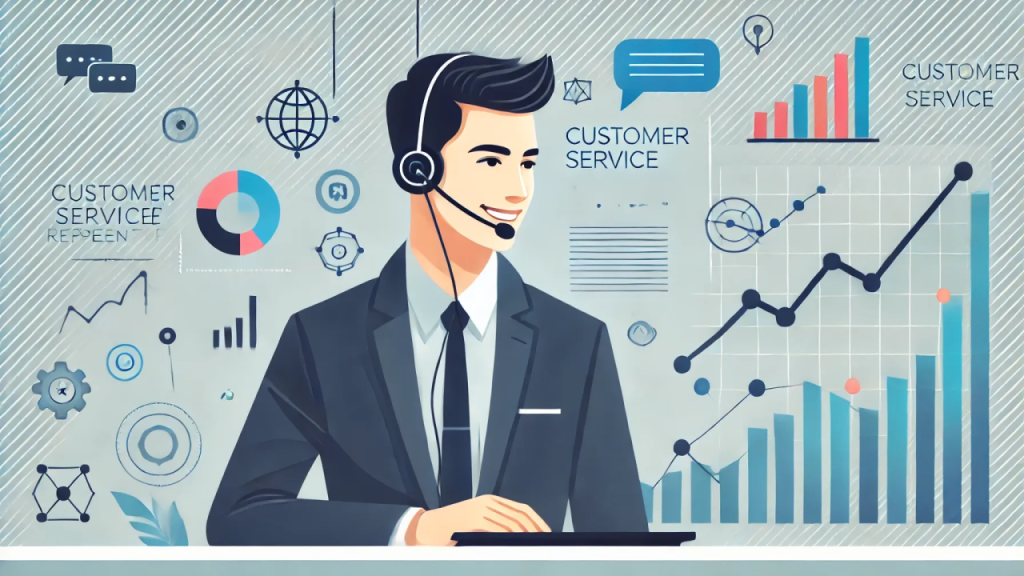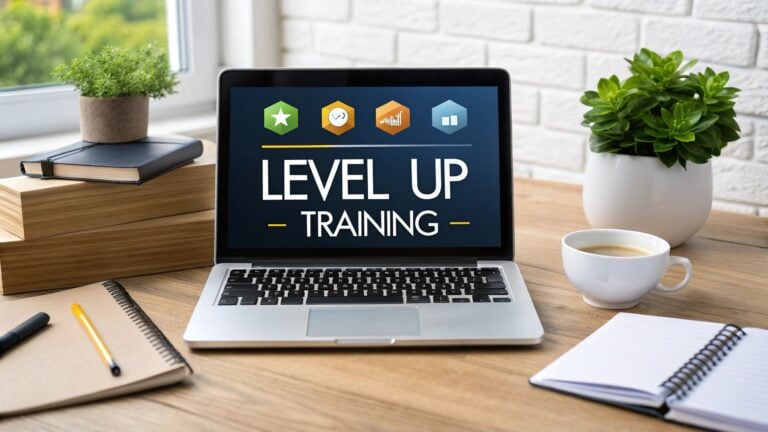Example of Upselling Script

We’ve all been there. You’re buying a new phone, and the salesperson suggests adding a premium case that’s “perfect for your model.” Or you’re checking out software online when a popup offers an upgraded version with “essential features for professionals like you.”
That’s upselling in action, and when done right, it feels less like a sales tactic and more like helpful advice.
What Makes an Effective Upselling Script
Behind great upselling is usually a well-crafted script. Not a rigid, robotic set of lines to recite, but rather a conversational framework that guides the interaction toward a win-win outcome. The customer gets a better product that truly meets their needs, and the business increases its average order value.
I learned this lesson the hard way when I first started in sales. I would awkwardly tack on upsell offers at the end of conversations, making them feel disconnected from the customer’s actual needs. The results were predictable. There were lots of polite “no thank you” responses and missed opportunities.
Everything changed when my manager shared a simple framework for making upselling feel natural. The key was integrating the upsell into the entire conversation rather than treating it as a separate step. This approach transformed my sales conversations and dramatically improved my results.
Let’s walk through the elements of an effective upselling script and see how they work together to create a positive experience for everyone involved.
Building Connection Through a Thoughtful Greeting
The foundation of successful upselling starts with the initial greeting. A warm, personalized greeting opens the door to genuine conversation.
When I worked at a computer store, our top salesperson always started with a greeting that invited customers to share their situation. Rather than the standard “How can I help you today?” she would ask, “What brings you in to see us today?” or “What kind of project are you working on that needs tech support?” These open-ended questions encouraged customers to talk about their actual needs rather than just stating what product they were looking for.
This subtle difference creates space for a more meaningful conversation. When a customer mentions they need a laptop for graphic design work rather than just saying “I need a laptop,” you immediately have context that informs your recommendations.
Good greetings sound conversational, not scripted. They vary based on the situation, whether it’s a first-time customer or a returning one. Acknowledging repeat customers with “It’s great to see you again” builds continuity and trust that makes later upselling feel more natural.
Discovering What Really Matters to Your Customer
The next phase of an effective upselling script involves asking thoughtful questions to understand what the customer truly needs, even if they don’t yet realize it themselves. This discovery process is arguably the most important part of the entire interaction.
Many salespeople rush through this step, asking perfunctory questions before jumping to recommendations. But the most successful upselling happens when you take time to uncover the customer’s underlying needs, preferences, and pain points.
In my experience selling software subscriptions, I found that asking about three specific areas dramatically improved my ability to offer meaningful upgrades:
- Current challenges or frustrations with existing solutions
- How they plan to use the product in their daily routine
- Future needs they anticipate as they grow or expand usage
These questions reveal opportunities where premium features or enhanced versions actually provide real value to the customer.
For example, when a customer mentioned they frequently collaborated with team members on documents, I knew the premium version with advanced sharing features would genuinely improve their experience.
The art of discovery isn’t just asking questions, it’s listening carefully to the answers and asking follow-up questions that go deeper. When a customer says they need something “reliable,” asking what reliability means to them specifically often reveals insights that guide your recommendations.
Introducing the Upgrade Naturally
With a solid understanding of your customer’s needs, introducing an upgraded option should feel like a natural extension of the conversation. The key is connecting your suggestion directly to something the customer has shared.
Notice the difference between these two approaches:
“Would you like to upgrade to our premium version? It has more features.”
Versus:
“Based on what you mentioned about sharing large video files with clients, I think our professional version would work better for you. It removes the file size limitations that would cause problems with your workflow.”
The second approach directly connects the recommendation to the customer’s actual situation. It doesn’t feel like a generic upsell because it’s specifically tailored to address a need they’ve expressed.
When I trained new sales team members, I always emphasized that the upgrade suggestion should pass the “so what?” test. If the customer might think “so what?” after hearing about a feature, you haven’t sufficiently connected it to their specific needs.
Making Benefits Crystal Clear
Perhaps the biggest mistake in upselling scripts is focusing on features rather than benefits. Customers don’t really care about technical specifications or feature lists. Instead, they care about how those things improve their lives or solve their problems.
A feature is what something is or does. A benefit is how it makes the customer’s life better. For example:
- Feature: “The premium plan includes 1TB of storage.”
- Benefit: “With 1TB of storage, you’ll never have to worry about deleting old projects to make room for new ones, and you can keep your entire photo library in one place.”
The most effective upselling scripts translate every feature into a concrete benefit that resonates with the specific customer. This requires really understanding not just what your products do, but how they create value in various customer scenarios.
I remember working with a customer who was hesitant about upgrading to a more expensive camera. When I explained that the better low-light performance meant they could capture their children’s indoor performances without using a disruptive flash, their entire perspective changed. The feature became meaningful because it connected to something they cared about.
Addressing Hesitation With Understanding

Even with perfect alignment between customer needs and your upgrade recommendation, customers often hesitate. This is normal and should be built into your script as an expected part of the conversation, not an obstacle.
When a customer expresses concern about an upgrade, the worst response is to immediately counter with why they’re wrong. Instead, effective upselling scripts acknowledge the concern and respond with empathy before providing additional context.
For instance, when a customer says “That’s more than I planned to spend,” a good response might be:
“I understand budget considerations are important. Many customers initially feel the same way. What they typically find is that the additional features save them enough time and frustration that the extra cost becomes a good investment over the life of the product. Would it be helpful if I showed you specifically how that would work in your situation?”
This approach validates their concern while offering a different perspective. It’s conversational and helpful rather than pushy or dismissive.
Real-World Example in Action
Let’s see how these elements come together in a complete upselling conversation. Here’s a scenario I encountered regularly when selling home office equipment:
Customer: “Hi, I’m looking for a printer for my home office.”
Salesperson: “Welcome! I’d be happy to help you find the right printer. What kind of work do you do from your home office?” (Thoughtful greeting with an open question)
Customer: “I’m an accountant, so mostly documents and spreadsheets. Nothing fancy.”
Salesperson: “That’s helpful to know. About how many pages do you typically print in a week? And do you ever need to scan documents for clients?” (Discovering specific needs)
Customer: “Maybe 20-30 pages weekly. And yes, I do scan tax documents during tax season, which is always a hassle with my current setup.”
Salesperson: “I see. Based on your accounting work and need for scanning during tax season, I’d recommend looking at this model here. While it’s $50 more than the basic printer you might have been considering, it includes an automatic document feeder for scanning multiple pages. That would save you a lot of time during tax season when you’re scanning client documents.” (Natural introduction of upgrade tied to specific need)
Customer: “That sounds useful, but I’m not sure about spending the extra money.”
Salesperson: “I understand wanting to keep costs down. Many of our accounting customers initially felt the same way. What they’ve found is that during tax season, the time saved by scanning multiple pages at once instead of placing each page individually frees up hours they can spend on billable work instead. The automatic feeder also prevents paper jams that can occur with manual feeding, which means fewer frustrating interruptions when you’re on a deadline.” (Addressing hesitation with understanding and specific benefits)
Customer: “I hadn’t thought about it that way. Tax season is already stressful enough without equipment problems.”
Salesperson: “Exactly. Would you like me to show you how the document feeder works so you can see if it would be helpful for your specific needs?” (Moving forward with demonstration)
Notice how this conversation flows naturally. The upsell emerges organically from understanding the customer’s situation rather than being forced into the interaction.
Why Good Upselling Matters Beyond Sales
Well-crafted upselling scripts improve customer satisfaction when done right. Research consistently shows that customers who purchase upgraded products typically report higher satisfaction with their purchase.
This makes intuitive sense. When customers get a product that truly meets all their needs rather than one that falls short in key areas, they have a better experience. The initial price difference becomes less important as they enjoy the benefits of the right solution day after day.
Some of my most appreciative customers were those I guided toward slightly more expensive options that better matched their needs. They would often return months later to thank me for preventing them from making a purchase they would have quickly outgrown or found frustrating.
Upselling, when approached as a way to help customers make better decisions rather than simply increase sales figures, becomes a valuable service rather than a pushy tactic. The script serves as a framework for having meaningful conversations that lead to better outcomes for everyone involved.






